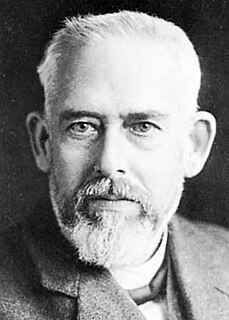
Johann Palisa was an Austrian astronomer, born in Troppau, Austrian Silesia, now Czech Republic. He was a prolific discoverer of asteroids, discovering 122 in all, from 136 Austria in 1874 to 1073 Gellivara in 1923. Some of his notable discoveries include 153 Hilda, 216 Kleopatra, 243 Ida, 253 Mathilde, 324 Bamberga, and the near-Earth asteroid 719 Albert. Palisa made his discoveries without the aid of photography, and he remains the most successful visual (non-photographic) asteroid discoverer of all time. He was awarded the Valz Prize from the French Academy of Sciences in 1906. The asteroid 914 Palisana, discovered by Max Wolf in 1919, and the lunar crater Palisa were named in his honour.

Maximilian Franz Joseph Cornelius Wolf was a German astronomer and a pioneer in the field of astrophotography. He was the chairman of astronomy at the University of Heidelberg and director of the Heidelberg-Königstuhl State Observatory from 1902 until his death in 1932.
Karl Wilhelm Reinmuth was a German astronomer and a prolific discoverer of 395 minor planets.

Carl Gustav Witt was a German astronomer and discoverer of two asteroids who worked at the Berlin Urania Observatory, a popular observatory of the Urania astronomical association of Berlin.
18610 Arthurdent, provisional designation 1998 CC2, is an asteroid from the middle region of the asteroid belt, approximately 3.5 kilometers in diameter. It was discovered on 7 February 1998, by a team of astronomers including Felix Hormuth at Starkenburg Observatory in Heppenheim, Germany. The asteroid was named after Arthur Dent from Douglas Adams's Hitchhiker's Guide to the Galaxy series.
Lyudmila Georgievna Karachkina is an astronomer and discoverer of minor planets.
Tsutomu Seki is a Japanese astronomer and discoverer of minor planets and comets, born in Kōchi, Japan.
Atsushi Sugie is a Japanese astronomer and a discoverer of minor planets. He works at the Dynic Astronomical Observatory and has discovered many planets while working there. The Minor Planet Center credits him with the discovery of 122 numbered minor planets during 1988–2000.
Makio Akiyama is a Japanese astronomer affiliated with the Susono Observatory (886). He is a discoverer of minor planets, credited by the Minor Planet Center with the discovery of 16 numbered minor planets during 1989–1999.
Vincenzo Silvano Casulli, usually known as Silvano Casulli was an Italian amateur astronomer and a discoverer of minor planets at his Vallemare di Borbona Observatory in Lazio.

Jana Tichá is a Czech astronomer and discoverer of minor planets. She studied at the University of Economics in Prague and graduated in 1987. In 1992 she was selected for the position of a director of the Kleť Observatory.
Antonio Vagnozzi is an amateur Italian astronomer and a discoverer of asteroids.
Masayuki Iwamoto is a Japanese astronomer from Awa in the Tokushima Prefecture. The Minor Planet Center credits him with the co-discovery of 6 asteroids made together with Japanese astronomer Toshimasa Furuta at the Tokushima-Kainan Astronomical Observatory (872) in 1988 and 1989.
Marco Cavagna was an Italian amateur astronomer.

Richard Reinhard Emil Schorr, was a German astronomer.

1682 Karel, provisional designation 1949 PH, is a stony Florian asteroid from the inner regions of the asteroid belt, approximately 7.5 kilometers in diameter.
Paul Herget was an American astronomer and director of the Cincinnati Observatory, who established the Minor Planet Center after World War II.
Hiroki Kosai is a Japanese astronomer with the Kiso Observatory. He is best known for helping to popularize astronomy in Japan and for his observations of comets and asteroids, most notably with his co-discovery the comet 1976 XVI. He is credited by the Minor Planet Center (MPC) with the discovery of nearly 100 asteroids.
Atsushi Takahashi is a Japanese amateur astronomer and discoverer of minor planets.
Martin Geffert (1922–2015) was a German amateur astronomer and co-founder of the Starkenburg Observatory in Heppenheim, Germany, where he had been the observatory's treasurer since its beginnings in 1970.








